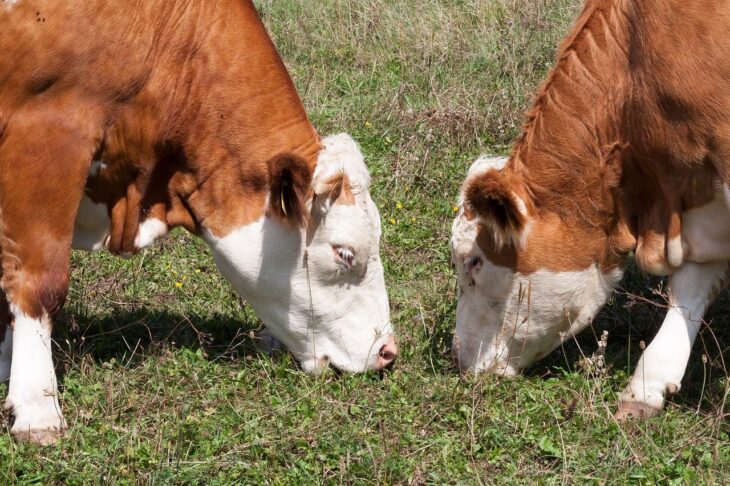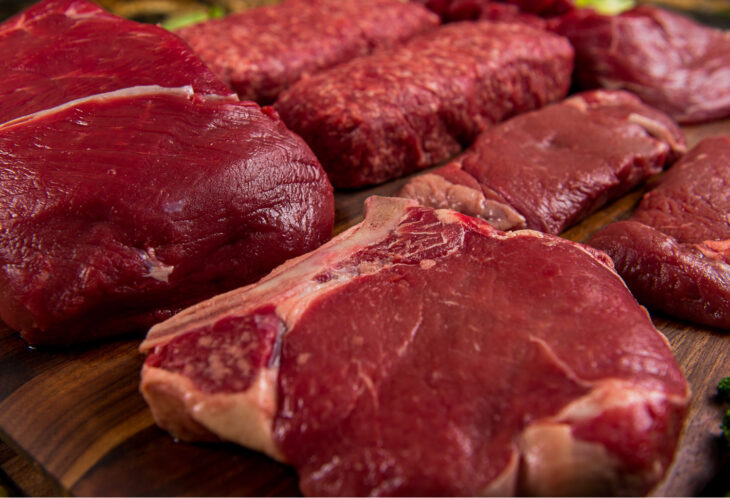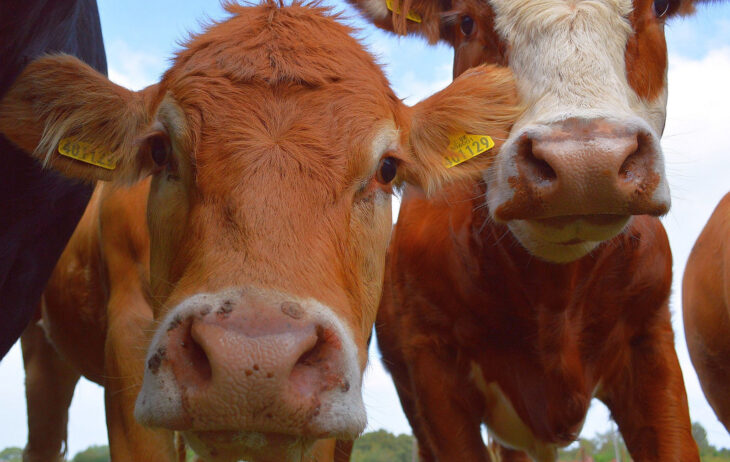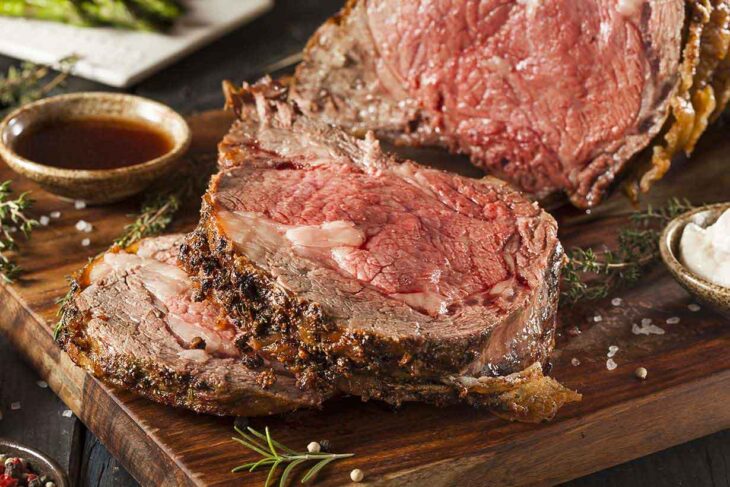If you’re a beef-eater who follows the latest food trends, you’ve probably noticed the explosion of restaurants that advertise their burgers or steaks as being “grass-fed.” Grass-fed beef is also becoming a supermarket staple, and it is often marketed as being a healthier choice.
Given how common it is for marketers to overstate the quality of their products, it’s always wise to be skeptical of big claims about new “superfoods,” but in the case of grass-fed beef there is solid evidence of superiority. This article will explore some of the reasons why.
Before we can talk about whether or not grass-fed beef is really worth the hype, however, it’s important to understand a little more about what makes grass-fed beef different from any other kind.
Contents
What is Grass-Fed Beef?

Source: science
In the United States, the vast majority of beef cattle go through a number of distinct phases over the course of their lives, and will eat a predominantly or completely grass-based diet at one point or another. In a sense, all beef is “grass-fed,” at least for a while.
For that reason, it has become common to distinguish between beef that is simply “grass-fed” and beef that is “grass-fed and grass-finished.” “Grass-finished” is an industry term used to indicate cattle that have only eaten a grass or forage diet — unlike cattle raised using the more conventional method of grain-finishing, in which cows spent the last part of their life eating carb-rich feed made from corn and other grains.
For the purposes of concision, this article uses the term “grass-fed” to refer to all beef cows raised only on a grass diet, and grain-finished for those that have also eaten grain-based feed.
How is Grass-Fed Beef Different?

Source: wikipedia
The lifecycle of the average American beef cow is around two to three years. For grain-finished and grass-fed beef, the first year is more-or-less the same: as calves, they spend time grazing with their mothers before moving to a diet of pasturage. But whereas most grain-finished cows are then sent to a feedlot to be fattened up, grass-fed cows continue to mature on their diet of pasturage.
Because grass is less calorically dense than grain, cows on a feedlot bulk up faster. Grass-fed cows, on the other hand, tend to be much leaner. After all, they’ve spent their time walking about on ranchland and eating the grasses, herbs, and hay that grows on the land, rather than being given a regular supply of rich feed.
This creates a difference in the meat of these animals. Grain-finished beef tends to contain significantly more fat-marbling, and has a somewhat sweeter flavor. Grass-fed, on the other hand, is gamier, darker in color, and contains a lot less visible fat.
What are the Health Benefits of Grass-Fed Beef?

Source: onegreenplanet
The differences in upbringing lead to three main health differences between grass-fed and grain-finished beef:
- Fat content: Because grass-fed beef is leaner than grain-finished, it contains less fat and fewer calories. If you want to enjoy red meat on a diet, grass-fed is the number-one option.
- Fat quality: Not only is there less fat in grass-fed beef, it’s better fat. Specifically, grass-fed beef contains greater quantities of omega-3 fatty acids and conjugated linoleic acid (CLA).
- Nutrients: Grass-fed beef is more nutrient dense that grain-finished and contains more Vitamin A and E, and is richer in antioxidants.
Many doctors recommend limiting your red meat intake, so if you want to enjoy your red-meat ration to go further, switching to grass-fed can be a great way of doing so.
Where Can I Find Grass-Fed Beef?

Source: nutritionadvance
Because of the confusion around labelling discussed earlier, it can be hard to know whether the grass-fed beef you find in the supermarket is actually been raised on an all-grass and forage diet. For this reason, it is a good idea to always ask for grass-fed and finished beef wherever you do your shopping.
Fortunately, as documentarians, reporters, and scientists uncover the damage large-scale feedlot production is hurting animals and the planet, more Americans are waking up to the importance of local, artisanal meats that are healthier, more humane, and have a lower environmental impact.
Depending on where you live, you may be able to find grass-fed beef at your local artisanal butcher, but the one option all Americans in Illinois, Indiana, Iowa, Michigan, Missouri, New York, North Carolina, Ohio, Pennsylvania, and Wisconsin have is Trulocalusa.com — a delivery company dedicated to connecting customers with high quality meat.
They deliver a wide range of grass-fed beef products right to your house or apartment, including burgers, ribeye, skirt, and strip steaks as well as ground beef. They offer a subscription-based service that automatically repeats, but you can also opt for a one-off delivery, making it easy to try grass-fed out to see if you like it.
How Should I Cook Grass-Fed Beef?

Source: onegreenplanet
One question many people trying out grass-fed beef for the first time have is whether or not they need to adjust their favorite recipes, or if grass-fed can be cooked the way any other type of beef is cooked. A grass diet imparts different characteristics to the meat, so it is important to adjust how you cook it.
For example, according to the American Grass Fed Association, grass-fed beef cooks about thirty percent faster than grain-finished beef, so it should spend less time on the grill or in the pan. Furthermore, because grass-fed beef is so much lower in fat, it can easily dry out.
Some chefs recommend sticking to rare or medium-rare temperatures when cooking the beef, but if you really like your beef well done, consider cooking it in a sauce that will keep it moist. When grilling, coat your burgers or steaks in a light oil like olive oil to help brown the meat without drying it out.
Finally, it’s important not to cook from frozen or even from the refrigerator. Thaw your beef slowly, and then let it reach room temperature before cooking in an oven, pan, or grill that has been pre-heated.
In many ways, grass-fed beef is a symbol of where the American diet is headed. As conscious eating becomes more important, people are not so much giving up their favorite foods as looking for alternatives that let them enjoy classic dishes in a more responsible way.
Beloved as much for its rich flavor as for the sustainable and humane way in which it was raised, grass-fed beef is winning over health-conscious eaters across the nation. Give it a try yourself this summer, and find out of this healthier version of red meat is right for you.
